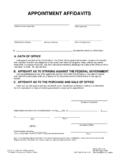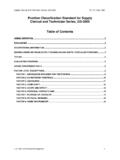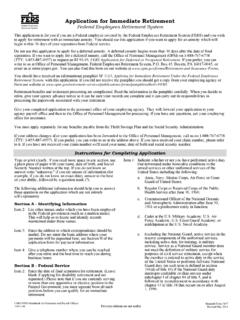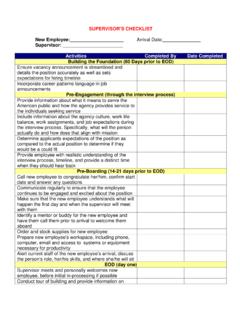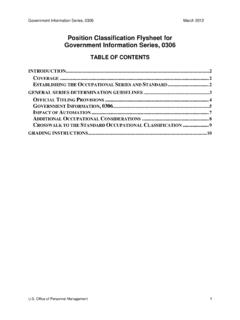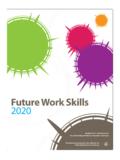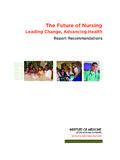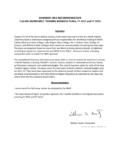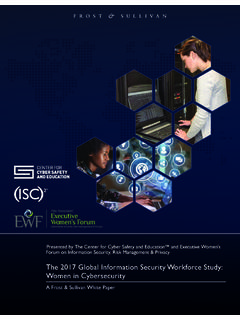Transcription of Workforce Planning Template - OPM.gov
1 October 7, 2011 Migration Planning guidance inforMation docuMents Workforce Planning Best Practices Table of Contents 1. 1 2. Workforce Analysis .. 1 Workforce Analysis Framework .. 2 Workforce Analysis Workforce Analysis 3 3. Workforce Transition ..4 Transition Plan ..4 Transition Tools .. 5 4. Lessons Learned Workforce Analysis and Transition .. 5 Workforce Analysis Lessons Workforce Transition Lessons Learned .. 6 Workforce Planning Best Practices 1. Purpose Workforce Planning serves as the foundation for managing an organization s human capital. It enables organizations to strategically meet current and future Workforce needs and prevents unnecessary disruptions in maintaining a steady-state Workforce . Workforce Planning further assists organizations by ensuring that positions are filled by the right employees with the necessary competencies and that the Workforce meets future organizational goals and objectives.
2 The more effective the development and execution of the Workforce plan, the more the organization is able to leverage its human capital to accomplish its strategic goals. 2. Workforce Analysis The Office of Personnel Management (OPM) has issued a Federal Workforce Planning Model that can be found at The following table and discussion incorporates steps from the OPM model and best practice research: Workforce Analysis Framework 1. Analyze Mission, Vision, Strategic Plans, Budgets and Resource Allocation 2a. Analyze Demand 2b. Analyze Supply 2c. Conduct Gap Analysis 3. Create Workforce Strategy and Plans 4. Implement Plans 5. Evaluate Plans October 7, 2011 1 Workforce Planning Best Practices Workforce Analysis Framework The Workforce analysis framework is illustrated in the following process chart: 1.
3 Analyze Mission, Vision Strategic Plans, Budgets and Resource Allocation1. Analyze Mission, Vision Strategic Plans, Budgets and Resource Allocation2a. Analyze Demand (Forecast)2a. Analyze Demand (Forecast)2b. Analyze Supply2b. Analyze Supply3. Create WF Strategy and Plans3. Create WF Strategy and Plans4/5. Implement and Evaluate Strategy and Plans4/5. Implement and Evaluate Strategy and PlansStakeholder Management and Communication Strategies2c. Conduct Gap Analysis2c. Conduct Gap Analysis future Structure, Processes, Tasks, Roles Workforce Competencies and Staffing Requirements/ Composition Job/organizational design Internal Development Training Recruitment, Performance management Succession Planning Outplacement Assess impact of Workforce strategies Conduct benchmark analysis Refine Workforce Planning strategies and metrics Current Structure Workforce Competencies, Staffing Levels/Composition Performance Demographics0660-0101.
4 Analyze Mission, Vision Strategic Plans, Budgets and Resource Allocation1. Analyze Mission, Vision Strategic Plans, Budgets and Resource Allocation2a. Analyze Demand (Forecast)2a. Analyze Demand (Forecast)2b. Analyze Supply2b. Analyze Supply3. Create WF Strategy and Plans3. Create WF Strategy and Plans4/5. Implement and Evaluate Strategy and Plans4/5. Implement and Evaluate Strategy and PlansStakeholder Management and Communication Strategies2c. Conduct Gap Analysis2c. Conduct Gap Analysis future Structure, Processes, Tasks, Roles Workforce Competencies and Staffing Requirements/ Composition Job/organizational design Internal Development Training Recruitment, Performance management Succession Planning Outplacement Assess impact of Workforce strategies Conduct benchmark analysis Refine Workforce Planning strategies and metrics Current Structure Workforce Competencies, Staffing Levels/Composition Performance Workforce Analysis Methodology The primary elements of the Workforce analysis methodology involve a review of the following: Mission critical occupations and competencies Supply evaluate the current headcount of the organization including anticipated retirements and separations.
5 Identify the current skills and competencies of the Workforce Demand forecast the optimal headcount and competencies needed to meet the needs of the organization in the future ; identify skills and competencies needed in mission-critical occupations in the future Workforce Gap Analysis evaluate the gap between the supply and demand analyses. The Gap Analysis identifies headcount and competency surpluses and deficiencies. From the Gap Analysis the following are derived: o future Headcount Gap o future Competency Gap The Workforce analysis methodology is illustrated in the following table: October 7, 2011 2 Workforce Planning Best Practices Current Supply future Supply future Gap Headcount Gap future Headcount and Competencies Retirements And Separations Current Headcount and Competencies Current Gap Headcount Gap The difference between the number of employees remaining in the current The difference between the current supply and the current Workforce after retirements & separations have been taken into account ( future demand headcounts.)
6 Supply) and the number of employees that will be needed in the future based on business needs ( future demand). Skill Gap Skill Gap Skill gaps in the current population. There are three kinds of skill gaps: Competency gaps in the portion of the current population remaining in the Workforce after retirements and separations have been taken into account. Competencies retired and separated employees take with them when they leave the Workforce . The competencies that will be needed in the future based on business needs. future Demand Current Demand future Headcount and Competencies Business Drivers Current Headcount and Competencies Additionally, a Workforce analysis should include a review of the following: Workforce activity analysis Demographics (including age, distribution, and tenure) Industry trends Projections (retirements, separations, etc.
7 Workforce diversity Educational pipelines (particularly regarding sources of new hires) Supervisor ratio Labor market supply (including unemployment rates) Risk analysis (to minimize the impact on the Workforce due to restructuring) Consideration of strategies to close gaps, such as succession Planning , target recruitment, training programs, restructuring, retention, strategies, etc. Workforce Analysis Tools Workforce analysis relies heavily on the proper collection and evaluation of data. Data can come from a variety of sources, both quantitative and qualitative in form. Primary sources of data include: Employee databases Employee job class specifications and position descriptions Focus groups and workshops Surveys/questionnaires Employee competency self-assessments Employee evaluations by managers Subject matter experts October 7, 2011 3 Workforce Planning Best Practices Process maps (help to identify how the organization functions and the interrelationships between various processes) IT systems designed to measure competencies (system can be either custom made or a commercial off-the-shelf (COTS) or government off-the-shelf (GOTS) system) 3.
8 Workforce Transition Transitioning a Workforce from the current state to a future state is a challenging endeavor. However, with proper Planning and organization, the transition process can be accomplished smoothly. Those managing the transition of a Workforce to a future state should take appropriate actions and make the necessary plans to ensure the Workforce : Quickly adapts to the new environment Quickly gains an understanding of new processes, programs, and IT systems associated with the transformation Demonstrates high levels of efficiency and effectiveness in their new roles Rapidly meets the needs and requirements of their customers Is able to work together with new colleagues as a high performing team To ensure these things do indeed happen, a detailed transition plan must be developed and followed, and proven change management approaches and methodologies should be employed.
9 Transition Plan A detailed transition plan is needed to guide the transition from the current to the future state. When developing the transition plan, at a minimum the following should be considered: Identify specifically what the organization seeks to accomplish with the change Clearly define transition objectives Define the new business environment Clearly define current and future business processes (create supporting documentation for new processes) Develop a Workforce plan that addresses competency gaps Ensure HR infrastructure is able to support the Workforce plan Establish a detailed transition timeline that is agreed to by stakeholders Develop change management plans including rollout, communications, and stakeholder management Develop and deliver training for new technology, processes, policies, etc. Develop a plan to mitigate potential risks associated with the transition based on a thorough risk analysis Establish a mechanism to regularly evaluate the effectiveness of the transition plan, successes, failures, and issues that need to be addressed October 7, 2011 4 Workforce Planning Best Practices Transition Tools Transitioning a Workforce often involves the redeployment of resources including personnel and competencies.
10 The ultimate goal of any Workforce transition should be to ensure that the right people with the necessary competencies are in the right positions. The following transition tools can be employed to promote a successful Workforce transition: Employee training and development perhaps the most important element of conducting a Workforce transition is creating and delivering an effective employee training and development program. Successful training and development programs can include: o Systems Immersion in which employees develop competencies in a variety of mission-critical IT systems and software. o Business process training Workforce transitions normally include the re-engineering of old business processes and, consequently, employees must receive comprehensive training regarding the new business processes. o Orientation training for those employees placed in new departments, divisions, etc.

